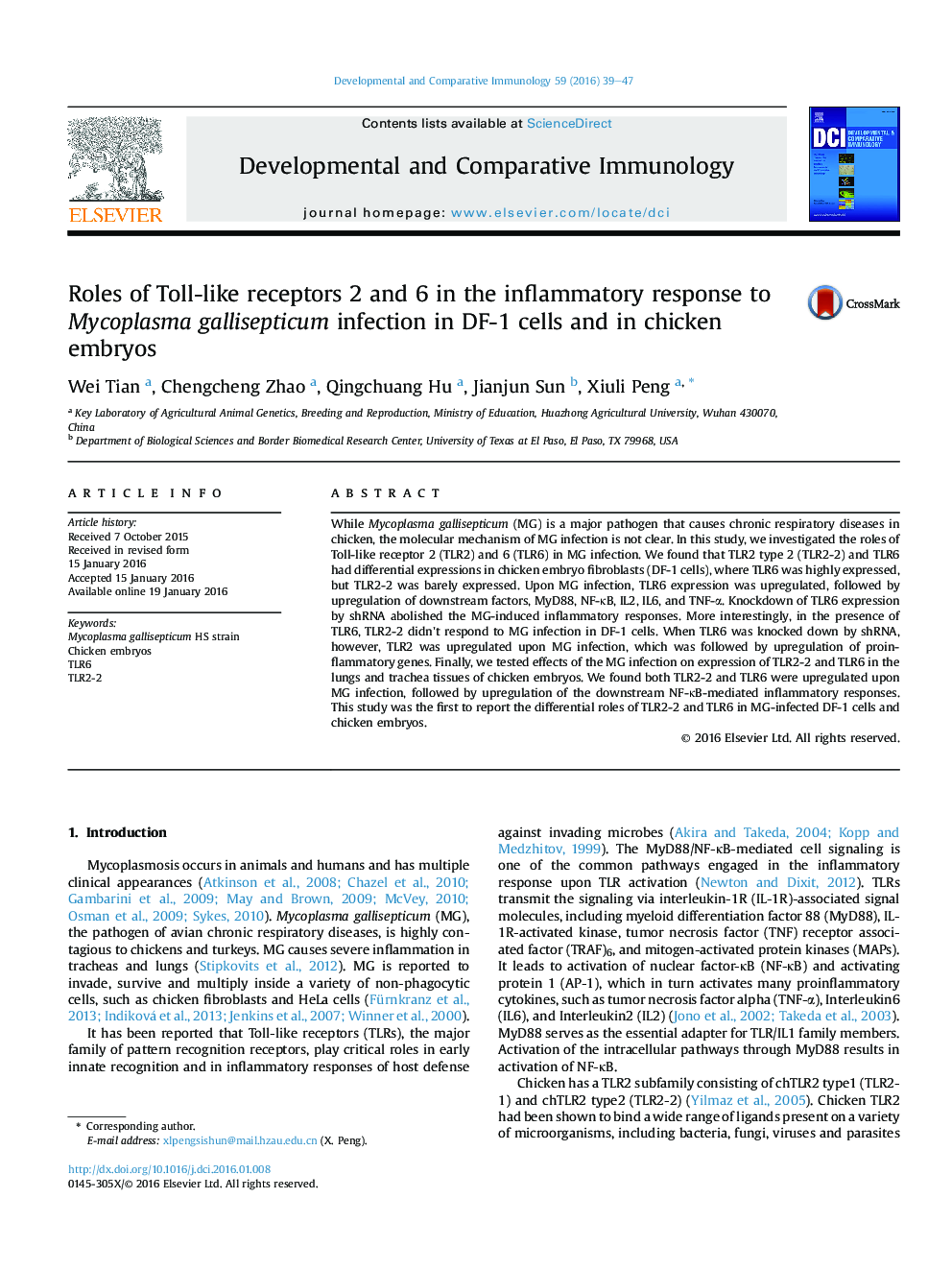| Article ID | Journal | Published Year | Pages | File Type |
|---|---|---|---|---|
| 2428881 | Developmental & Comparative Immunology | 2016 | 9 Pages |
•Both TLR6 and TLR2 play important roles in MG-infected chicken.•In native DF-1 cells, there is expression of TLR6, there is no expression of TLR2.•TLR6 plays a key role to induce inflammatory responses in MG-infected DF-1 cells.•When TLR6 is knockdown in MG-infected DF-1 cells, TLR2 activates NF-kB pathways.
While Mycoplasma gallisepticum (MG) is a major pathogen that causes chronic respiratory diseases in chicken, the molecular mechanism of MG infection is not clear. In this study, we investigated the roles of Toll-like receptor 2 (TLR2) and 6 (TLR6) in MG infection. We found that TLR2 type 2 (TLR2-2) and TLR6 had differential expressions in chicken embryo fibroblasts (DF-1 cells), where TLR6 was highly expressed, but TLR2-2 was barely expressed. Upon MG infection, TLR6 expression was upregulated, followed by upregulation of downstream factors, MyD88, NF-κB, IL2, IL6, and TNF-α. Knockdown of TLR6 expression by shRNA abolished the MG-induced inflammatory responses. More interestingly, in the presence of TLR6, TLR2-2 didn't respond to MG infection in DF-1 cells. When TLR6 was knocked down by shRNA, however, TLR2 was upregulated upon MG infection, which was followed by upregulation of proinflammatory genes. Finally, we tested effects of the MG infection on expression of TLR2-2 and TLR6 in the lungs and trachea tissues of chicken embryos. We found both TLR2-2 and TLR6 were upregulated upon MG infection, followed by upregulation of the downstream NF-κB-mediated inflammatory responses. This study was the first to report the differential roles of TLR2-2 and TLR6 in MG-infected DF-1 cells and chicken embryos.
